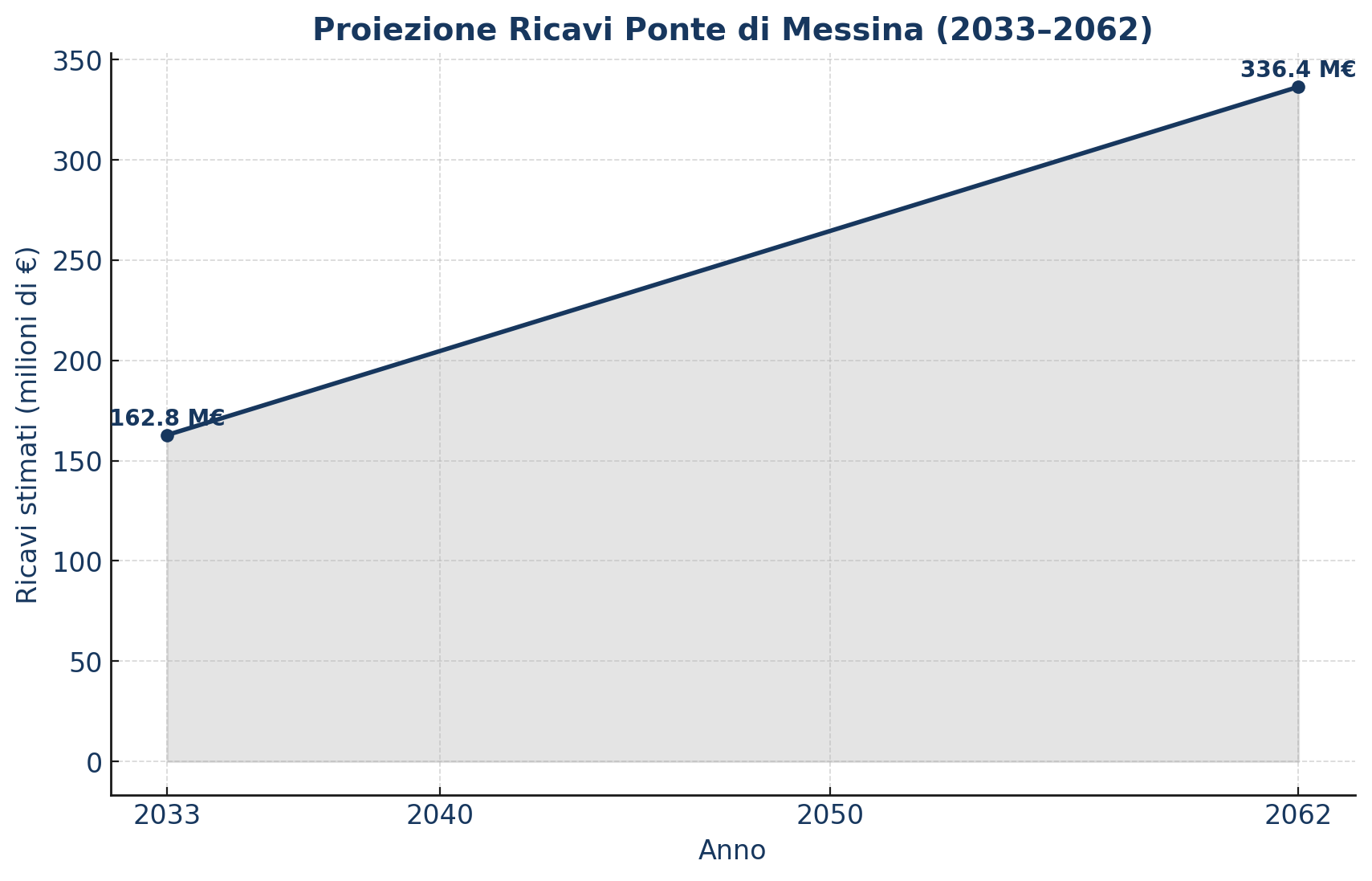Bridge of Messina
Infrastructure Revenue
The Messina Bridge is not only an extraordinary engineering work, but also a project based on solid economic foundations.
The revenues generated will mainly come from tolls, railway fees, and state contributions for territorial continuity.
The financial projections indicate a gradual and sustainable increase in revenues over time, confirming the long-term viability of the investment and its economic impact.
ECONOMIC BASES
Bridge of Messina
IN DETAIL
Bridge of Messina
The Economic Model of the Messina Bridge
The economic model of the Messina Bridge is primarily based on crossing tolls, which will represent the main source of revenue for the infrastructure.
Additional income will come from railway usage fees generated by passenger and freight trains, as well as public contributions linked to the principle of territorial continuity — already established to ensure stable and accessible connections with Sicily.
The estimates outlined in the financial plan demonstrate not only the project’s long-term sustainability but also its potential economic return for the State, the concessionaire company, and the involved operators.
The gradual increase in traffic flows, together with the Bridge’s strategic role as a key hub within the European transport corridors, strengthens the reliability of these projections.
In this context, the expected revenues serve both as a guarantee of management stability and as a means to generate widespread economic benefits for the surrounding territories.
Long-term projections
Bridge of Messina
The financial projections indicate a gradual and sustainable increase in revenues over time, confirming the long-term viability of the investment and its economic impact.
By 2033, the operating revenues are expected to reach approximately €162.8 million, and by 2062 they should reach €336.4 million, in line with the forecasted growth of traffic flows and the integration of the Bridge within the European transport corridors.
The main source of income will remain tolls, supported by railway fees and public contributions — ensuring economic balance, continuous maintenance, technological updating, and development of the surrounding territories.

The composition of revenues
Bridge of Messina
The main source of revenue will continue to be road tolls, estimated at €300.4 million by 2062.
Crossings by private vehicles and heavy transport will therefore represent the primary economic support for the infrastructure.
Alongside tolls, two additional components will play an important role:
-
Railway fees, generated by the use of the Bridge by passenger and freight train operators;
-
The territorial continuity contribution, currently received by RFI to ensure transport connections with Sicily, which in the future will be integrated into the management of the permanent connection.

Impact and sustainability
Bridge of Messina
The revenue distribution highlights a balanced model: on one hand, road users guarantee constant and growing flows; on the other hand, the railway component and public contributions ensure stability even during consolidation phases.
In this sense, revenues do not merely represent an economic return for investors, but become a tool for sustainability for the entire infrastructure, enabling maintenance, upgrades, and advanced security services.

A driving force for the territory
Bridge of Messina
Beyond the numbers, the revenue generated by the Messina Bridge should also be viewed as a development opportunity for the involved territories. The increase in tourist flows, the reduction in transport times, and the greater logistical competitiveness will have economic impacts far exceeding direct income alone, stimulating investment and new employment.
Revenue Trend (2033-2062)
Bridge of Messina





